One of the original 13 colonies, Massachusetts is a long-standing, important piece of US history and is still highly ranked for its livability. In 2021 it earned second place in WalletHub.com’s rankings of the Best States to Live In, which factored in housing costs, income growth, education rate, and quality of hospitals. In the Bay State, you can be surrounded by beaches and forests while soaking in rich history and diverse culture. Not to mention, some of America’s top-tier universities (Harvard and MIT) are in Boston. From the booming tech industry to staple sectors such as agriculture and fishing, there is an abundance of opportunities for those looking to move to Massachusetts. Let’s explore some lesser-known cities in this northeastern state that suit your best lifestyle. In this list, cities are arranged from the lowest housing cost to income ratio so that you can keep a larger paycheck at the end of the day.
Barnstable-Yarmouth
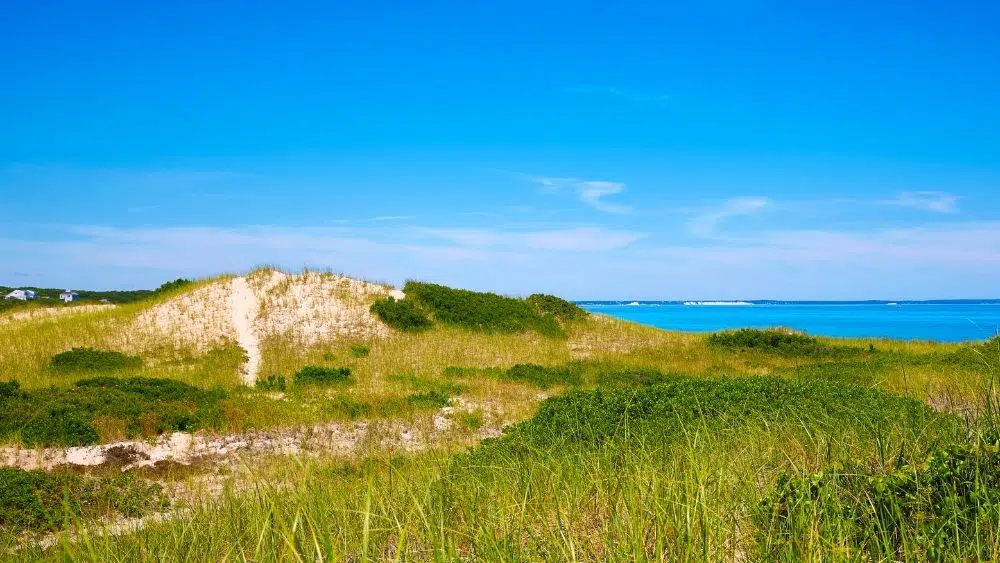
Housing cost to income ratio: 0.69
Average childcare cost to income ratio: 1.65%
Violent crime index: 15.1
Nonviolent crime index: 21.6
Cost of living index: 128.5
Coming in at the top of the list is Barnstable-Yarmouth, two cities located in the Cape Cod region. Barnstable is filled with breathtaking scenery and consists of seven villages. The city receives 48 inches of rain, 26 inches of snow, and 201 sunny days per year. During those sunny days, you can hit the beaches (Mayflower Beach, Sandy Neck Beach, South Cape Beach State Park) or enjoy a cold brew at Cape Cod Beer. Despite being somewhat of a summer tourist destination, housing is relatively affordable with the median home value at $58,933. The residents are liberal and welcoming to all.
Yarmouth is just four miles east of Barnstable and was voted the eighth-best place to retire in Massachusetts by Niche.com. It is a quaint town of around 23,000 with close, tight-knit families. For fun activities, there are saltwater and freshwater beaches to enjoy, plus an annual family-friendly Sand Sculpture Trail.
Pittsfield

Housing cost to income ratio: 3.12
Average childcare cost to income ratio: 2.50%
Violent crime index: 29.0
Nonviolent crime index: 40.9
Cost of living index: 87.9
Pittsfield is a city of around 42,500 with lots to do and see. It’s also close to major cities like Springfield and Worcester. There are four distinct weather seasons in Pittsfield and on average you’ll see 46 inches of rain, 71 inches of snow, and 205 sunny days per year. Rain or shine, Pittsfield has no shortage of activities: you can visit the family-friendly Berkshire Museum, ski on Bousquet Mountain, or stroll through October Mountain State Forest in the autumn. The city is filled with kind, creative residents who are moderately liberal. Pittsfield is the perfect place to live if you crave city life and love to be immersed in nature.
Fitchburg-Leominster
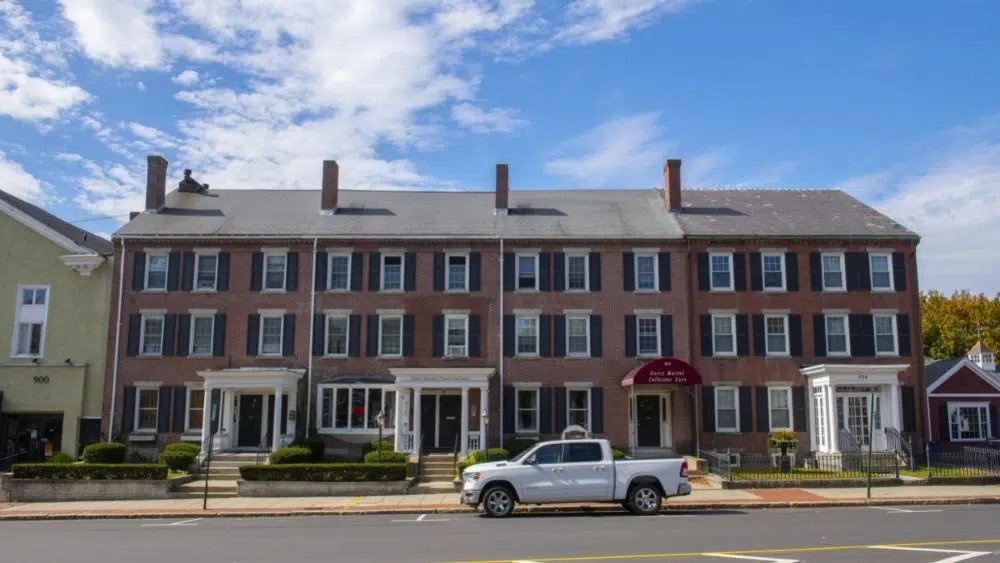
Housing cost to income ratio: 4.79
Average childcare cost to income ratio: 1.80%
Violent crime index: 40.3
Nonviolent crime index: 35.9
Cost of living index: 98.5
Fitchburg-Leominster, which both have a population of around 40,000, are community-oriented cities located in Worcester County. If you’d like to get away from the bustling city, then consider three popular neighborhoods: Fitchburg, Cleghorn, and Southside. Big outdoor enthusiast? Both cities are surrounded by an abundance of nature, including trails, parks, and rivers. In the fall you can hike through Leominster State Forest or shred the slopes on Wachusett Mountain in the winter. For a taste of culture, visit the Fitchburg Art Museum or travel back in time at the Fitchburg Historical Society. Both cities have good education systems; the student population is diverse and there are an array of activities and clubs offered. Overall, the cost of living is on the lower end of the options in Massachusetts, making it a viable option for your next place to call home.
Springfield
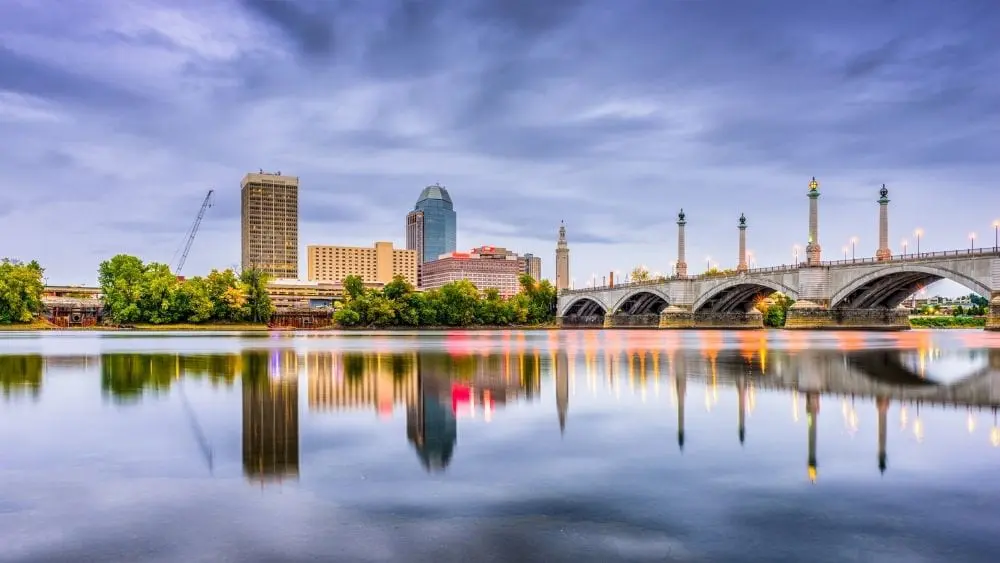
Housing cost to income ratio: 5.65
Average childcare cost to income ratio: 3.19%
Violent crime index: 51.4
Nonviolent crime index: 51.5
Cost of living index: 89.7
Located in western Massachusetts, Springfield, also known as the birthplace of basketball is a medium-sized city of around 154,000. There are great welcoming neighborhoods such as East Longmeadow, Hampden, and South Hadley, which are filled with young professionals and retirees who are moderately liberal. For those with school-aged children, the public and private school systems in Springfield are highly rated and you will have your choice of colleges and universities where you can further your education.
As for awesome attractions, check out: The Basketball Hall of Fame, the Dr. Seuss Museum, and the new MGM Casino complex. Be sure to carve out time to visit Springfield Museums and Storrowton Village Museum in this historical city. Other advantages include Springfield’s proximity to rural settings and quaint towns like Amherst and Northampton. The rail service to New York has also improved in recent years – a one-way trip only takes about three and a half hours. Lastly, housing is moderately priced, with the median home value at $222,956.
Brockton
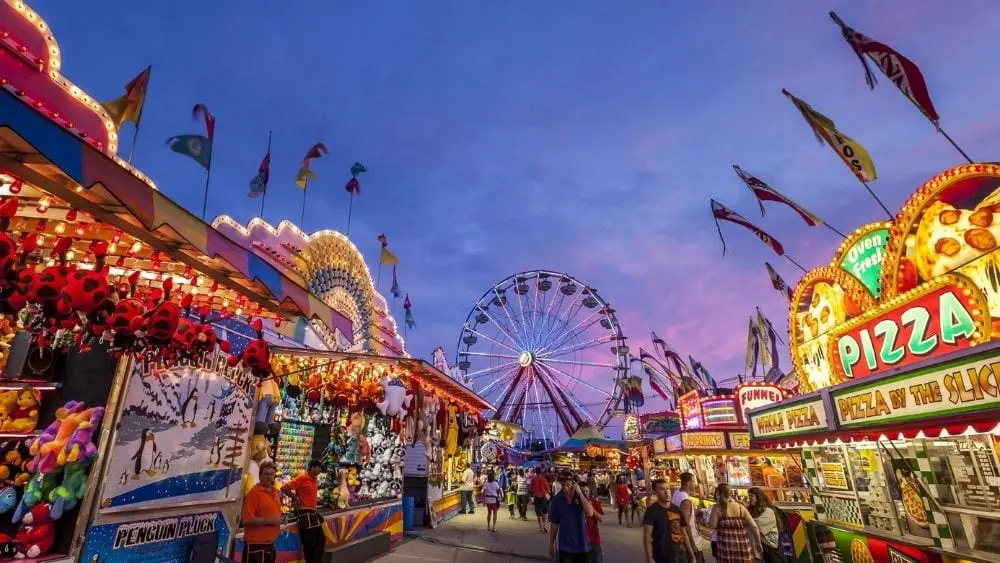
Housing cost to income ratio: 6.10
Average childcare cost to income ratio: 1.91%
Violent crime index: 59
Nonviolent crime index: 59.9
Cost of living index: 117.6
Brockton is a beautiful city of around 93,000 in southeastern Massachusetts, filled with friendly residents and diverse families. The ‘City of Champions’ has 70 hospitals, four pet-friendly hotels, and plenty of historical sites to visit. The most popular suburbs are Winter’s Corner, Marshall Corner, and Clifton Heights. For those who love the great outdoors, you will find an abundance of green spaces to explore. Bring your furry companion to D.W. Field Park or Ames Nowell State Park, which are both around a 15-minute drive from the heart of the city. Additionally, Brockton’s public school education system is highly reputed, earning multiple awards throughout the years. Brockton High School’s athletic program captured the coveted number one spot in Massachusetts by Sports Illustrated. The city’s political views lean moderately liberal.
Lowell
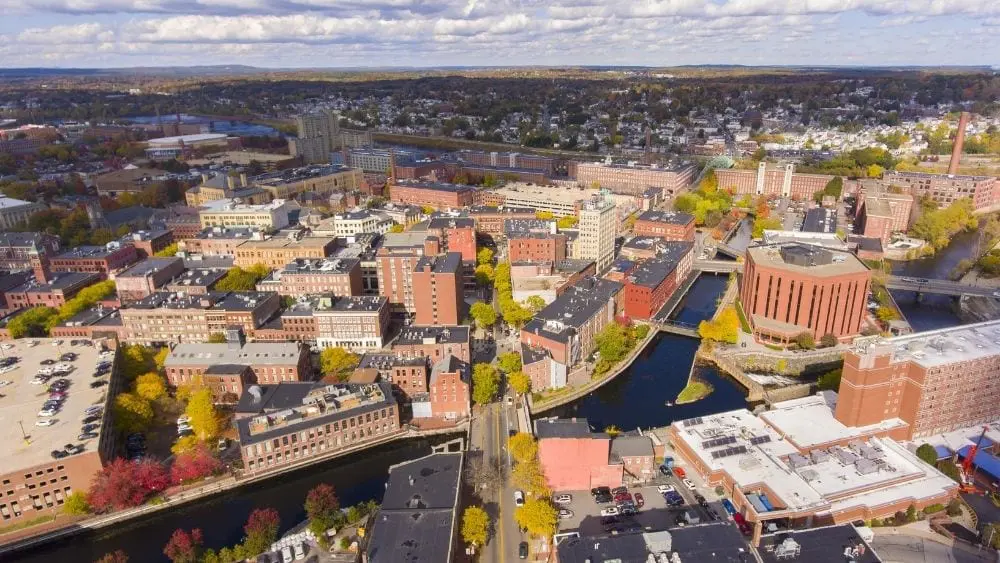
Housing cost to income ratio: 6.23
Average childcare cost to income ratio: 1.54%
Violent crime index: 29.6
Nonviolent crime index: 35.2
Cost of living index: 112.5
Built as a mill town in the early 1800s, Lowell has since kept the nickname ‘Mill City’. Located 27 miles northwest of Boston, this city of about 111,000 is very diverse and liberal. Be prepared for cold and snowy winters, with 56 inches of snow annually, and hot and humid summers.
Lowell is known for its vibrant arts scene. To see works by local artists, check out Whistler House Museum of Art or Brush Art Gallery & Studios. The city is also packed with restaurants and bars. Every summer you can also look forward to the Lowell Folk Festival, where locals and tourists gather to get to know neighbors, enjoy a variety of cuisines, and learn about the historical monuments of Mill City. This exciting celebration lasts a full weekend each summer.
The University of Massachusetts Lowell and Middlesex College both have campuses centrally located downtown. If you’re looking to hop over to Boston, you can catch the train, which only takes around 45 minutes one way and costs about $10.
Worcester
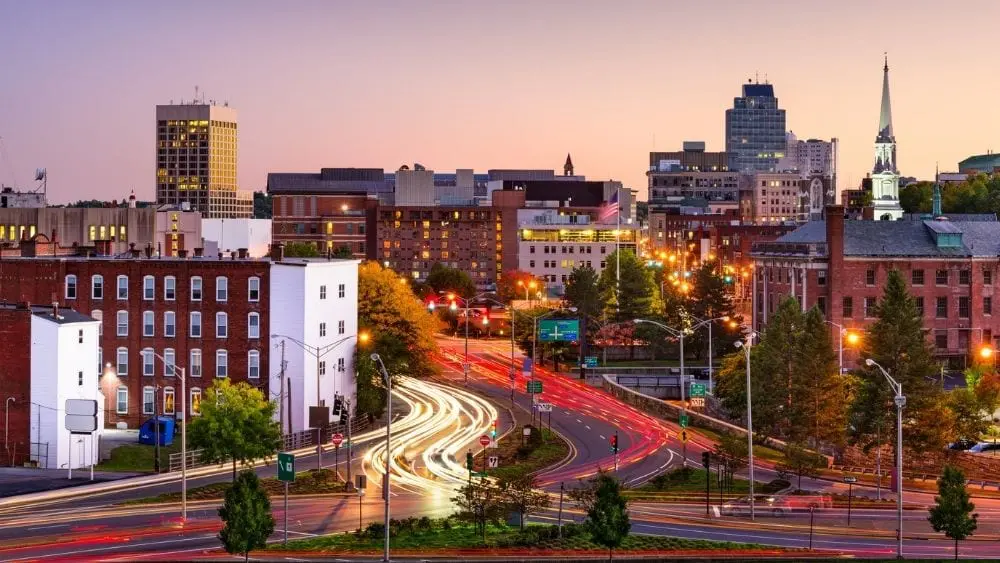
Housing cost to income ratio: 6.78
Average childcare cost to income ratio: 2.18%
Violent crime index: 44.8
Nonviolent crime index: 42.2
Cost of living index: 102.2
City life meets suburban life here in Worcester, Massachusetts. The city has a medium-sized population of about 185,400 and is served by 348 schools and 10 hospitals. This moderately liberal city has affordable housing, quality public schools, many colleges and universities, and access to diverse cultures, sports, restaurants, and entertainment. In the winter, the entire town is draped with lights, and you can enjoy skating on the 12,000-square-foot rink – the Oval. Summer and springtime events include visiting the Worcester Art Museum, walking along the path of the Wachusett Reservoir, or exploring the new gardens at Tower Hill.
Boston
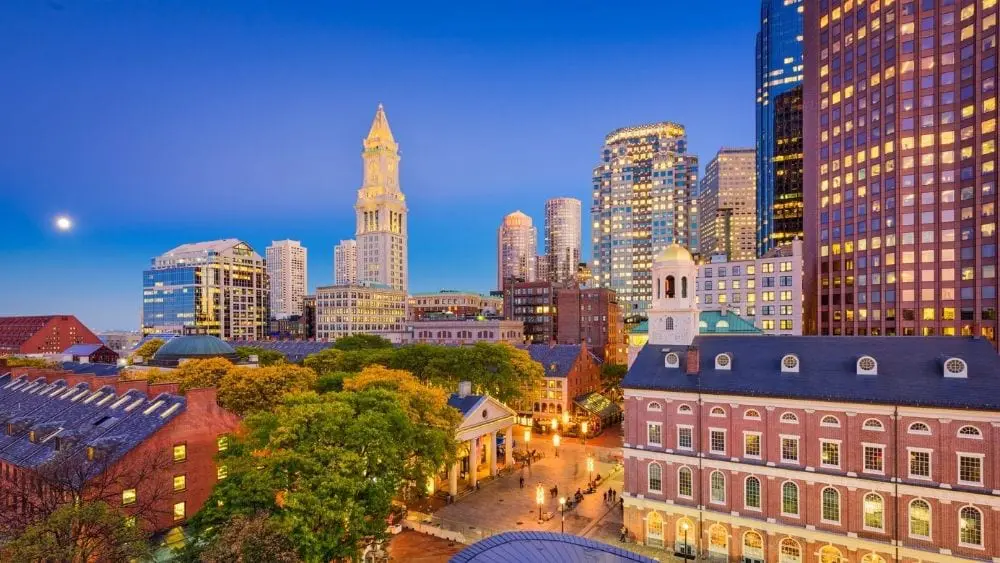
Housing cost to income ratio: 8.23
Average childcare cost to income ratio: 2.46%
Violent crime index: 37.3
Nonviolent crime index: 35.8
Cost of living index: 153.4
Boston, the capital and largest city in the state, is an energetic place to be for young adults. The city has an approximate population of almost 700,000 and is a mecca for sports fans. Boston has some of the best colleges and universities in the nation (you may have heard of Harvard or Massachusetts Institute of Technology) plus award-winning hospitals and healthcare. Some popular suburbs that surround the city are Brookline, Cambridge, and Newton. The four seasons are pronounced, so you can fully enjoy a ball game at Fenway Park in the spring or sled on the Boston Common during the winter. While smaller than other major cosmopolitan American cities, Boston is filled with history, charm, and excitement.
Lawrence
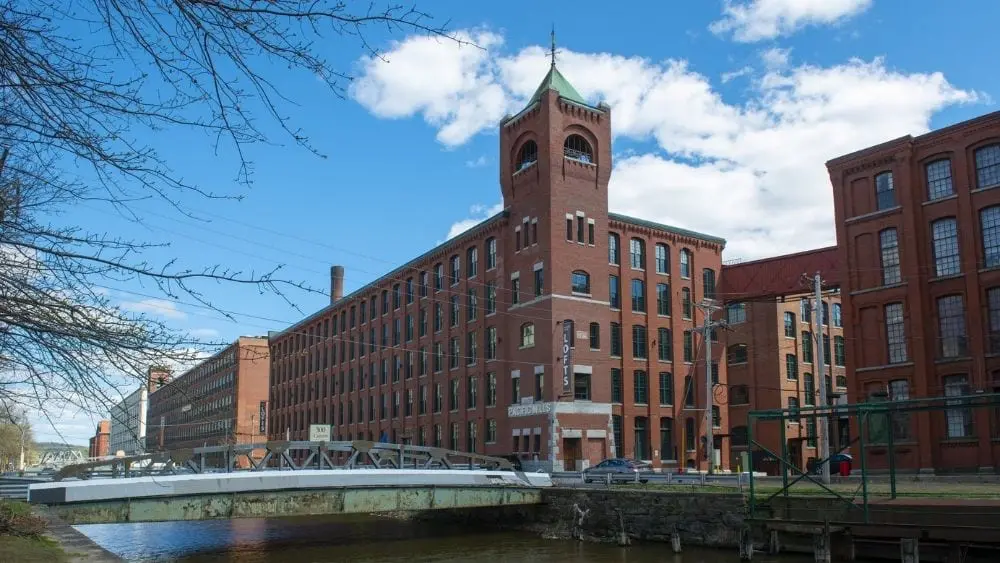
Housing cost to income ratio: 8.83
Average childcare cost to income ratio: 2.50%
Violent crime index: 44.9
Nonviolent crime index: 34.6
Cost of living index: 107.2
Lawrence is a strongly liberal city of around 80,000 that is known for its rich history. Prior to colonization, Native Americans lived along the Merrimack River for thousands of years. The area, now known as Lawrence, officially became a city around the mid-19th century and rose to prominence as a textile center. As a family-oriented town, the most popular suburbs are Prospect Hill, Back Bay, and Arlington. You can look forward to the pleasant sunny weather in July and August where you’ll experience highs of 79.9°F. During this favorable weather, enjoy a stroll at Den Rock Park, learn about the comprehensive history of the city at Lawrence Heritage State Park, or observe the exuberant tulips blooming at Stevens-Coolidge House & Gardens. Coined the ‘Immigrant City’, Lawrence has a diverse population and lots of cool pockets of culture to explore. You can pop into Puerto Rican eateries, visit the Canal Street Antique Mall, or drive down Essex Street to check out the street art. Don’t underestimate Lawrence, a beacon of culture, rich history, and gems to be explored.
New Bedford
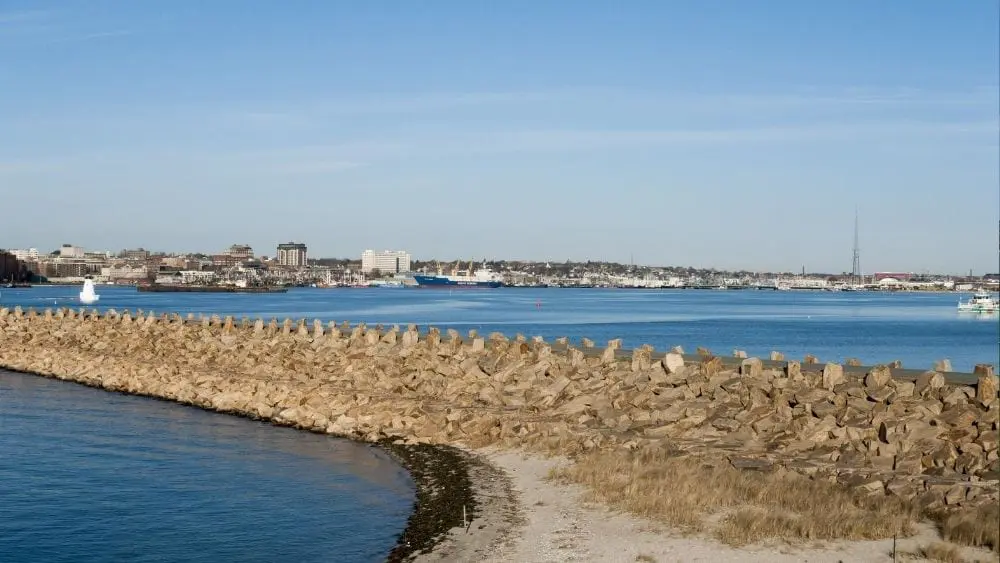
Housing cost to income ratio: 18.81
Average childcare cost to income ratio: 2.41%
Violent crime index: 11.0
Nonviolent crime index: 15.2
Cost of living index: 100.4
Located on the Acushnet River, New Bedford is a coastal city known as The Whaling City as it was once one of the world’s most important, you guessed it, whaling ports. The city has a population of around 95,000, most of whom are somewhat liberal. Since the city is virtually surrounded by water, you can dine on tasty seafood and drink in the beauty of its beaches. The town has rich Cape Verdean and Portuguese culture, so you can treat yourself to authentic food true to both cultures. If you’re a history buff, you’re spoiled for choice of museums in New Bedford. There’s New Bedford Whaling Museum, Rotch-Jones-Duff House and Garden Museum, and New Bedford Whaling National Historical Park. The community is a strong proponent of the arts and has a stellar education system.
Rakini Bergundy was born in a little surf town called Houhai in China and loves writing. She’s passionate about dogs, home renovations, and politics.
 How to Build a House in Oregon
How to Build a House in Oregon